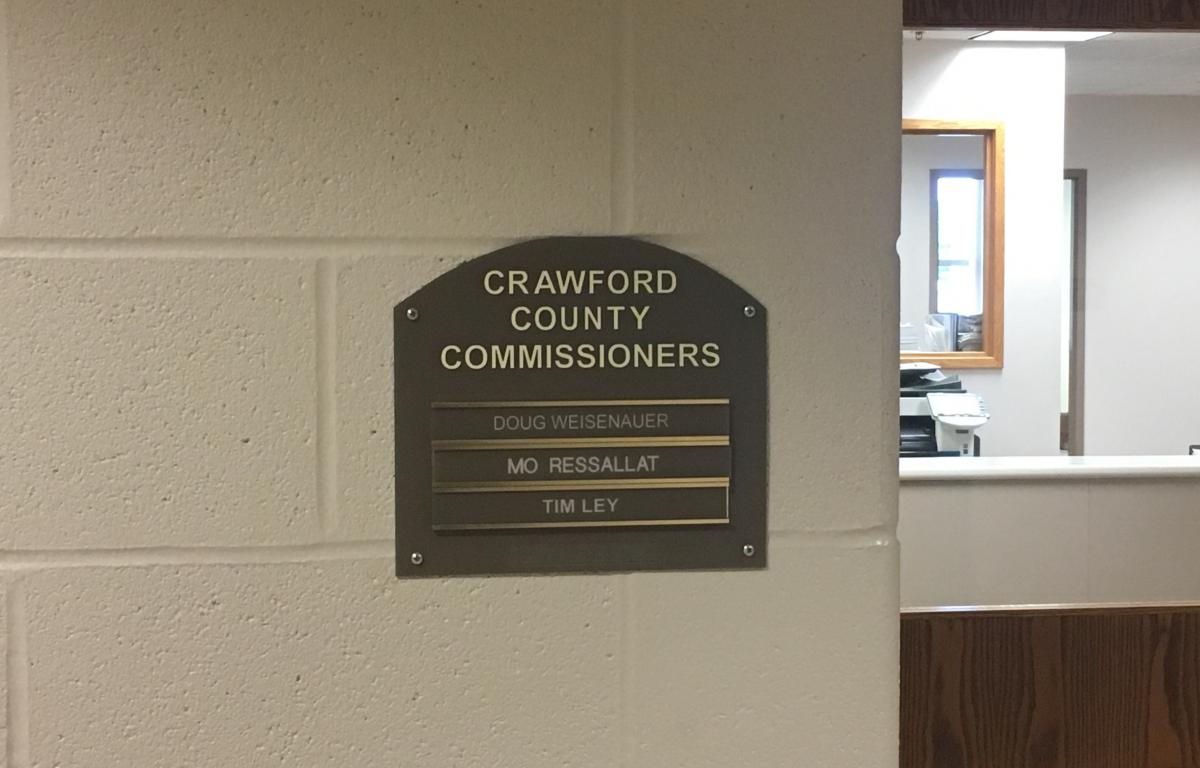BUCYRUS—Once again, the county commissioners met with Gary Frankhouse of the Crawford County Partnership and Michael DiPerna and Doug Cassingham from DiPerna & Associates, LLC via Zoom to discuss the financing strategy of the Freese Center travel sports complex.
“To draw people into communities takes a lot of vision and it takes risks—everyone takes risks in the business of economic development, and they were all calculated risks,” Michael DiPerna began. “That’s what we are trying to today is outline a strategy that makes sense to you all. We’ve looked at all the various pieces to make this a successful project.”
The estimated uses of funds totals to about 8.5 million dollars and the estimated sources of the funds is that the Freese Foundation would donate 6 million dollars, there would be 500,000 dollars in hard court naming rights, 500,000 dollars in turf naming rights, 500,000 dollars in State Capital funds, 200,000 dollars from the Timken Foundation, 100,000 dollars from the Community Foundation, and 700,000 dollars from the county commissioners.
The estimated start-up sources of funds are 100,000 dollars from the Community Foundation for 2021 and 2022 (50,000 dollars/year), 100,000 dollars from the Community Foundation for 2023 and 2024 (50,000 dollars/year, 100,000 dollars from a committed donor, 300,000 dollars from the county commissioners (150,000 dollars/per over two years), and 400,000 dollars from campaign fundraising over a two year period for a total of 1,000,000 dollars is total start-up sources of funds.
The estimated start-up uses of funds is 756,000 dollars in start-up costs and 244,000 dollars in operating costs for ramp during stabilization, which adds up to the 1,000,000 in estimated start-up funds.
“The Freese Foundation, as I was told this week, has a balance of over 11 million dollars in the foundation, so why doesn’t the Freese Foundation just pay for it all and leave the pressure off the taxpayer?” Commissioner Ley said. “I worry about the taxpayers in the county that I represent—the taxpayers from Oceola, New Winchester, New Washington, Lykens Township, and these farmers, disabled people, and veterans, that they aren’t going to agree to taxpayers’ money being spent on a private endeavor.”
“I guess that I would ask if we were to do that, which I’m not saying we should, the increase in sales tax money goes to Galion rather than the county because we’re only asking for 10 percent involvement from the county perspective. With the value of that coming back, how many times fold would the increase in sales tax we can expect from those visitors coming from out of the area? So, I think it’s a matter of synergy collaboration, different jurisdictions working together—that would be my response,” Gary Frankhouse said in response to Commissioner Ley.
The objective with the county’s participation would be that there would be an increase of sales tax on the other side of the balance sheet.
“I suspect that we are lucky to get 6 million dollars out of the 10 million dollars, versus asking for 8 million out of the 10 million. It’s just a question of reasonableness and what their tolerance level is for liquidating those assets. In theory, sure, they could do that, but I think that based on our previous discussions, we are probably maxing our request out at 6 million dollars,” DiPerna said. “What people want to see is other participation and how we went out and found more money to fund this project.”
For every athlete that would enter the complex, they would typically have at least one or two people with them. If you have a weekend tournament, you would have more people coming in and spending money to stay in the area hotels and to eat in the local restaurants, therefore creating an increase in sales tax for Crawford County.
“I think that it’s good for the community and that it’s a good project,” Commissioner Doug Weisenauer said.
Commissioner Ressallat echoed Weisenauer’s thoughts, “It’s a win-win situation. I know that some people don’t have our vision, but I think we have to move forward with the vision of the future. I wish we could vote soon because it is a good thing for our entire county and for the surrounding area.”
Incoming Commissioner Schmidt brought up that upon initially looking at the website, it said that there would be no taxpayer money put towards the project.
Frankhouse responded that it is a pledge of sales tax dollars. “Over the last 20 years, the average monthly sales tax has been 341,000 dollars, whereas through September of this year, the monthly average is 361,000 dollars in sales tax money. So, we’re up 20,000 dollars a month on average and if that continues, you’re talking about 240,000 dollars of new income into the county just this year,” Frankhouse said.
The projected increase in sales tax income due to the Freese Center is 4.58 percent.
“It’s shameful that Crawford is a distressed county. There are five distressed counties outside of the Appalachia, and we have to do different things. This is one of those that is a calculated risk, but it is a risk that shows a return in so many ways—it’s not just sales tax, it’s property tax and income tax. I think it’s important that we make the investment to increase those revenues,” Frankhouse said.
The projected plan is to begin this project in June.
There is not a projected date for the commissioners’ final decision. Should it go through by the end of the year, it is likely it will pass with Commissioners Ressallat and Weisenauer in favor and Commissioner Ley against. If the decision goes into next year, incoming Commissioner Larry Schmidt will be the swing vote in the decision.


